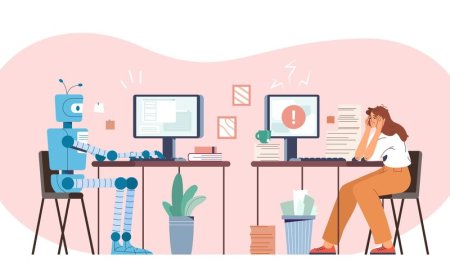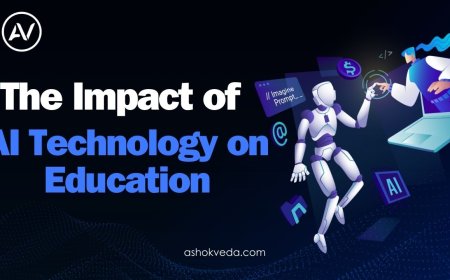The Basics of AI Reports

If you're interested in the topic of AI and how it can help us better perceive data, we're looking into The Basics of AI Reports, an interesting topic that's creating effects across industries. Whether you're a tech student or an experienced professional, understanding the basics of AI reports can help you make choices based on data.
We can learn about how AI reports are, why they're important, and how they work. Also, we'll look at the benefits, applications, tools, as well as certain challenges and future developments. Introduction to The Basics of AI reporting, you'll have a good basis for developing through The Basics of AI Reporting!
Understanding and utilizing this information effectively can be a game-changer. The Basics of AI Reports can help you turn raw data into actionable insights, making it easier to make informed decisions. Whether you're a business owner, a marketer, or just someone interested in data, AI reports can offer a wealth of benefits.
What are AI Reports?
The AI Report gives an overview of your modeling findings and insights, with a particular focus on Trusted AI insights that meet the requirements of quality, accuracy, and interpretability. The report analyzes the top-performing model's accuracy, as well as its speed and cross-validation scores.
Importance of AI Reports
AI reports have become an important tool in today's data conditions. Here are a few reasons why they are very important:
1.Increased Accuracy: AI reports reduce human mistakes, ensuring that Data Analysis is precise and dependable.
2.Real-Time Insights: They offer real-time analysis, enabling organizations to make quick decisions.
3.Cost-effective: Automating the reporting process can save time and money while freeing up resources for other activities.
How AI Reports Work
Understanding how AI reports work will help you see their importance even more
1.Data Collection: The initial step entails acquiring information from diverse sources. This could include everything from sales figures to client feedback.
2.Data Integration: The acquired data is then transferred to a central system, where it may be accessed and analyzed.
3.Data Analysis: Machine learning algorithms are used to detect patterns, trends, and insights.
4.Report Generation: Finally, the analyzed data is combined into an understandable and usable report.
Benefits of AI Reports
1.Automation: AI automates tasks by utilizing algorithms to complete them without human interaction. This includes data entry, scheduling, and basic customer questions, allowing human resources to focus on more complex activities.
2.Improved Customer Experience: AI analyzes customer data to better understand their preferences, behaviors, and needs. This enables businesses to adjust their goods and communications, resulting in more personalized and rewarding experiences for customers.
3.Smarter Decision Making: AI sorts through massive amounts of data, detecting trends, patterns, and connections that people may not notice right away. This information enables decision-makers to make more educated and strategic decisions about numerous elements of corporate operations.
4.Research and Data Analysis: AI systems can process and analyze enormous datasets considerably quicker than humans, revealing insights and trends that inform study findings or drive data-driven decisions.
5.Solves Complex Problems: AI systems can handle big, multiple problems by breaking them down into smaller, more manageable parts. AI can handle problems that are too complex or time-consuming for people to solve manually by using continuous processing and learning techniques.
6.Manages Repetitive Tasks: Artificial intelligence excels at performing repetitive tasks that demand precision and consistency. By automating these operations, AI not only saves time but also minimizes the likelihood of errors caused by human fatigue or oversight.
7.Reduces Errors: AI algorithms are meant to complete jobs with high precision and consistency, minimizing errors caused by human variables such as fatigue, distraction, or judgment.
8.Improved Business Efficiency: AI helps businesses run more efficiently by automating regular processes, offering insights for decision-making, and improving customer experiences. This efficiency enhancement can result in cost savings, higher productivity, and a competitive advantage in the market.
Applications of AI Reports
Natural language processing (NLP): Natural language processing (NLP) allows computers to understand and generate human language. This technique is utilized for a variety of purposes, including machine translation, spam screening, and sentiment analysis.
Computer vision: Computer vision enables computers to recognize and interpret visual content. This technique has a wide range of applications, including self-driving automobiles, facial identification, and object detection.
Machine learning (ML): Machine learning (ML) enables computers to learn from data and improve performance over time. This technique is utilized in a range of applications, including predictive analytics, fraud detection, and recommendation engines.
Robotics: Robotics is the branch of AI that studies the design, manufacture, and operation of robots. Robots have a wide range of uses, including manufacturing, healthcare, and space exploration.
Tools and Platforms for AI Reports
AI reports can be created and managed using a variety of technologies and platforms. Some prominent options include
1. Tableau: Tableau is a strong data visualization application that works well with AI to generate interactive and intelligent reports.
2.Power BI: Power BI is Microsoft's business analytics service that offers interactive visualizations and business intelligence features.
3.Google Data Studio: Google Data Studio is a free tool that transforms your data into interesting, readable, and shareable reports.
4.IBM Watson Analytics: IBM Watson Analytics is an advanced analytics solution that employs artificial intelligence to extract insights from your data and provide detailed reports.
5.Qlik Sense: Another data visualization and business intelligence platform that enables users to create interactive dashboards and reports from various data sources.
6.Domo: An enterprise-grade business intelligence platform that allows users to create real-time visualizations and reports for data-driven decision-making.
7.Looker: A data exploration and business intelligence platform that enables users to create and share reports, dashboards, and visualizations using SQL queries.
8.Sisense: A business intelligence software that allows users to prepare, analyze, and visualize complex datasets to create impactful reports and dashboards.
9.Alteryx: A data analytics platform that provides users with tools for data blending, advanced analytics, and predictive modeling, which can be integrated with reporting tools for comprehensive insights.
10.Amazon QuickSight: A cloud-based business intelligence service that enables users to create and publish interactive dashboards and reports using data from various sources.
Challenges and Factors of AI Reports
Data Quality and Integrity
The data on which an AI report is built serves as its foundation. Maintaining the quality and integrity of the data is critical to the report's accuracy.Inaccurate or missing data can result in incorrect findings and suggestions, reducing the overall usefulness of the AI report.
Intolerance and Equality
One of the most important problems of AI reports is the presence of bias in the data, algorithms, or interpretation of results. Addressing bias in AI reports is critical to ensuring fairness and preventing biased consequences.
Interpretability and Transparency
AI reports frequently contain complex algorithms and computations that can be difficult to understand or explain.Transparency in the research and decision-making processes that support AI reports is essential for developing stakeholder trust and promoting informed decision making.
Security and Privacy
Data security and privacy become essential when working with AI reports, especially when dealing with sensitive or confidential information.Implementing strong security measures and ensuring compliance with data protection requirements are important issues for AI.
Learning the basics of AI reports is essential in the current data-driven setting. These reports provide accurate, effective, and insightful analysis, which can greatly improve decision-making processes in a variety of sectors. Organizations may maximize the value of AI reports by employing the right technologies and addressing the associated difficulties.





































